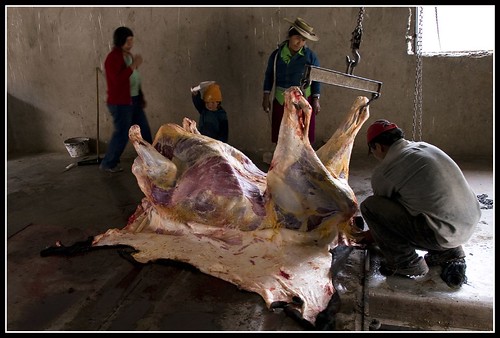
Matadero Iruya IV
Argentina is the home to the tango and the gauchos. As the second largest country in the area in South America, Argentina is equivalent to about 30% of that of Europe, and is one of the more highly developed countries of the region and is potentially one of the richest farming countries in the world.
An increasing number of foreign visitors are birdwatchers as nearly 1000 of the 3000 species of birds registered in South America exist in Argentina. In places with easy access, enthusiasts head for Peninsula Valdes, Patagonia, the subtropical forests in the north western area.
Argentina is enormously varied both in its types of land and its climates. The western frontiers run along the crest of the high Andes, a formidable barrier between it and Chile. Geographers usually recognize four main physical areas – Andes, the North and Mesopotamia (vast forested plains), the Pampas (heart of the land), and Patagonia (arid, and wind swept plateau).
Tango
Although also sung and played, the tango was born as a dance just before the 20th century. The exact moment of the birth was not recorded and continues to be a matter of debate. The name “tango” predates the dance and was given to the carnivals of the black inhabitants of the Rio de la plata in the early 19th century. Elements of the black were taken over by the whites as the number of blacks dwindled.
Climate
From mid December to the end of February, Buenos Aires can be oppressively hot and humid of 70%. Beware of the high pollen count in the pollinating season if you have allergy problems. The winter months of June, July, and August (since its located on the southern hemisphere) are best for business trips. And spring weather in Buenos Aires is also pleasant to visit. The skiing season in Barlioche ends by August 30th.
People
The traditional image of the Argentine is that of the gaucho. Gauchoismo has been a powerful influence in literature folklore and society. Nearly 40% of the Argentine population reside in the Buenos Aires area, and almost exclusively are of European origin. In the far north provinces, colonized and neighboring countries, at least half the people are mestizos though they are 15% of the population of the entire country.


Comments